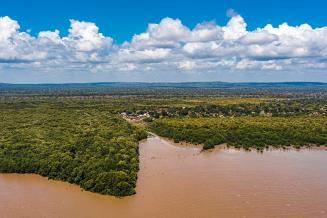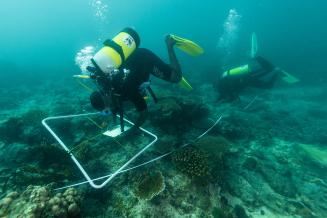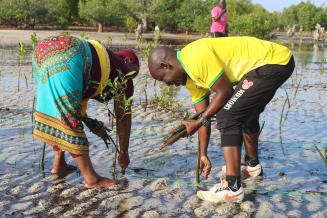UNESCO biosphere reserves are tangible proof that humanity can live in balance with nature. Since 1971, this community-led programme has successfully found a model for development where people live well and biodiversity is respected. I am pleased that this year, 11 more sites are joining this powerful network, which is more relevant and necessary than ever.Audrey Azoulay UNESCO Director-General
These additions were decided by the International Coordinating Council of UNESCO's Man and the Biosphere (MAB) programme, the Programme's governing body composed of 34 UNESCO Member States. It met from 12 to 15 June at UNESCO's Headquarters.
Biosphere reserves are a pillar of UNESCO's mandate as the United Nations sciences agency. Each biosphere reserve promotes innovative local solutions, in order to conserve biodiversity, preserve ecosystems and tackle climate change, while improving people's livelihoods, such as by developing agro-ecology, renewable sources of energy and green industries.
Biosphere reserves contribute to countries achieving the targets adopted last December within the framework of the Convention on Biological Diversity's Kunming-Montreal Global Biodiversity Framework. These targets include designating 30% of the Earth's land surface as protected areas and restoring 30% of the planet's degraded ecosystems by 2030.
11 newly designated biosphere reserves:
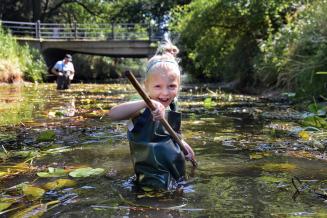

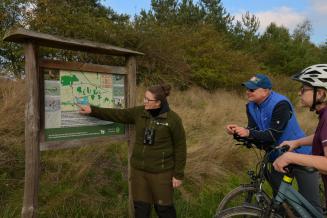
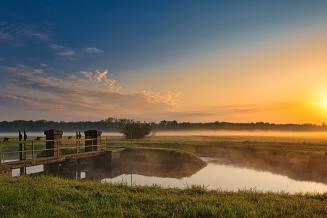
Cameroon: Korup Rainforest Biosphere Reserve
At over 60 million years old, Korup Rainforest is one of Africa's oldest rainforests. Located in the Guineo-Congolian biogeographical region in southwest Cameroon, contiguous with the Oban Biosphere Reserve in Nigeria, the Korup Rainforest Biosphere Reserve has a wide landscape that ranges from lowland forest to subtropical montane rainforest. It has been designated as one of Africa's two Pleistocene Refugia for its rich biodiversity and endemic fauna and flora. The biosphere reserve harbours a significant population of African primates, including the critically endangered Cross River Gorilla. Korup Rainforest is home to a linguistically and culturally diverse population of more than 30,000. The local economy is equally diverse, spanning agriculture, forestry, tourism and both recreational and service-based businesses. Some 32 villages are involved in the management of Korup Rainforest through a collaborative process designed to enhance community participation and improve local livelihoods.
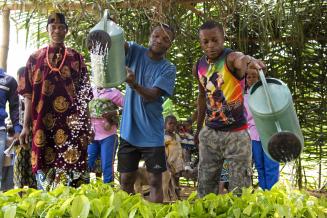
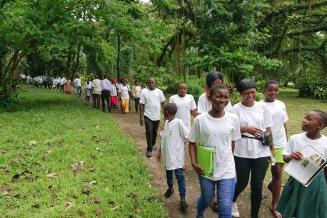
Central African Republic: Protected Area Complex of Northeast Central African Republic Biosphere Reserve
This biosphere reserve is located in the north-east of the country, in the transition zone between the Sahelian area to the north and the humid Equatorial area to the south. The site plays an important ecological role by connecting protected areas at the national and regional levels. Situated at the convergence of the Congo, Lake Chad and Nile Basins, the biosphere reserve possesses highly diverse groups of plant and animal species, as well as ecosystems and landscapes characterized by forest areas along rivers flanked by floodplains. One of its core areas, Manovo-Gounda St Floris National Park, is already inscribed on the World Heritage list. The biosphere reserve is home to a diverse population of 80,000, predominately engaged in agriculture through the cultivation of food crops such as cassava, millet, sorghum, groundnuts, corn and sesame. Other important traditional activities practiced here are hunting and fishing, followed by small-scale livestock-raising, handicrafts, small-scale trade, artisanal diamond-mining and the gathering of non-timber forest products.
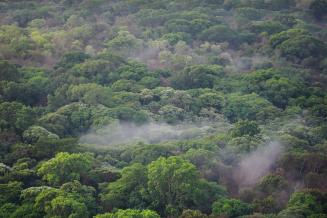
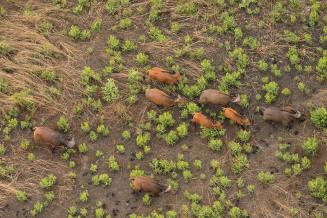
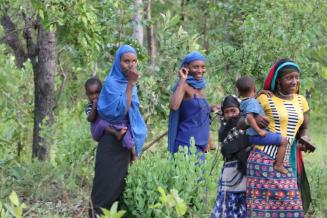
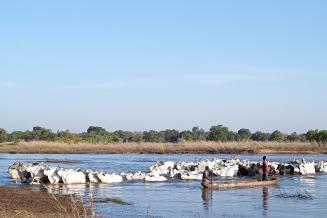
Colombia: Tribugá-Cupica-Baudó Biosphere Reserve
Located in the Chocó biogeographic region, Tribugá-Cupica-Baudó is the first biosphere reserve to be situated on the Pacific coast of Colombia, which is one of the two large biomes that influence this area. The other is the tropical rainforest of the Serranía del Baudó. The biosphere reserve contains a variety of landscapes (cliffs, estuaries, coastlines, gulfs, inlets, bays and marine areas) and ecosystems (reefs, mangroves, tropical forest) rich in biodiversity. It is home to a population of more than 18,000, the majority of whom are Indigenous Embera and Afro-Colombian peoples, the former of which speak a rare isolated language. The main economic activities are subsistence agriculture, artisanal fishing, traditional fishing and resource utilization, trade, nature tourism and handicrafts like pottery.
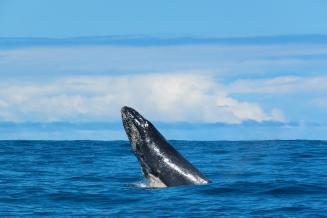
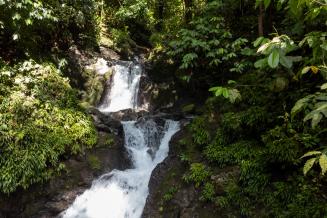
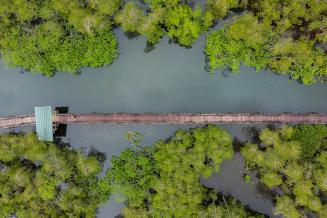
Germany: Drömling Biosphere Reserve
Drömling Biosphere Reserve is located on both sides of the former inner-German border of Saxony-Anhalt and Lower Saxony, two German federal states. The region has evolved over the past 250 years into a cultural landscape combining the development of agriculture with the conservation of peat bogs. The biosphere reserve plans to contribute to the restoration of the ecological and socio-cultural identities of the entire region by pursuing eco-tourism, joint water and renewable energy management, and environmental education. The biosphere reserve includes 11 nature reserves, 5 landscape protection areas and 1 national nature monument (Green Belt). The region is characterized by unique water-bound ecosystems with a continuous gradient, beginning with intact wetlands systems and forests and ending with intensive human influence. Around 54% of the biosphere reserve's area is included in the European network of protected areas (Natura 2000) as a bird sanctuary.




Indonesia: Bantimurung Bulusaraung - Ma'Rupanne Biosphere Reserve
Located in South Sulawesi Province, Indonesia, Bantimurung Bulusaraung - Ma'Rupanne Biosphere Reserve consists of three main landscapes: Bantimurung, Bulusaraung and Maros Pangkep; the latter is the second-largest karst landscape in the world. The types of land cover are tropical mountain forest, lowland forest and various areas devoted to different types of land use. One of the site's core areas, Bantimurung Bulusaraung National Park, is internationally renowned for its rich biodiversity, which includes 250 species of butterfly. The biosphere reserve has a diverse population of over 1.5 million inhabiting 672 villages. Communities such as the Makasar and Bugis people have upheld their traditional cultures for hundreds of years. Nature and cultural tourism are highly developed but agricultural activities, such as paddy farming, dryland and livestock agriculture, and fishing constitute the main livelihoods of local communities.
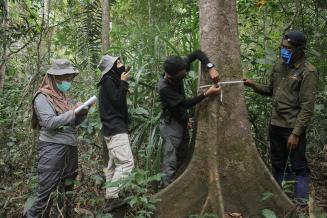
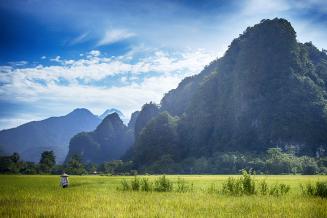
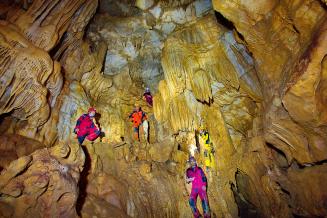
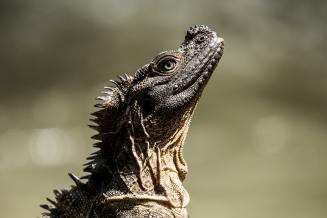
Kenya, Uganda: Mount Elgon Transboundary Biosphere Reserve
The designation of the Mount Elgon Transboundary Biosphere Reserve consolidates the water tower functions of the Mount Elgon Biosphere Reserve in Kenya (2003) and the Mount Elgon Biosphere Reserve in Uganda (2005), providing a range of ecosystem functions and supporting forests, wildlife and livelihoods in the area. Home to over 300 bird species, the site has an exceptional diversity of ecosystems as well as plant and animal species distributed across four distinct ecological zones characterized by different vegetation types: mixed montane forest, bamboo and low canopy forest, sub-alpine montane heath, and alpine moorland varying with altitude. The transboundary biosphere reserve has a population of nearly 1,150,000 that is evenly split between Kenya and Uganda. The area is inhabited by a diverse population of Sabaot, Luhya, Teso, Bagisu as well as other indigenous peoples and local communities who depend predominately on agriculture for both their livelihood and their subsistence. Communities rely on gathering forest products such as firewood, fodder, medicinal plants, vegetables, bamboo shoots, stakes, mushrooms, thatching grass and salt for their cattle. Several community conservation initiatives and programmes have been implemented as a way of securing community support for conserving the ecosystem.
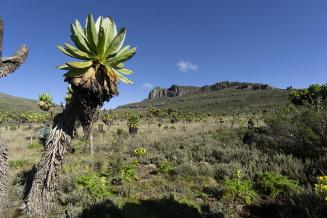
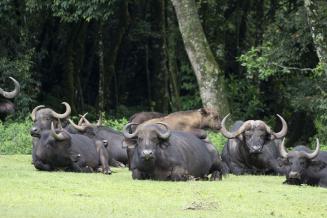
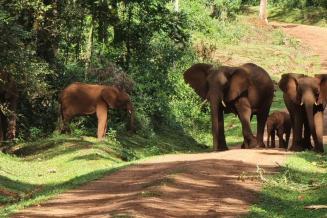

Mongolia: Onon-Balj Biosphere Reserve
Onon-Balj Biosphere Reserve is situated at the southern edge of the Siberian and boreal coniferous forest, which encompasses the Daurian steppe and the Onon and Balj River basin. Major ecosystem types here include forest, grassland and freshwater, characterized by the vertical landscapes that transition from the Khentii mountain range to taiga/boreal coniferous forest, then to steppe. The biosphere reserve is not only a hotspot for wetlands and water birds, it also abounds in culturally important areas including historical sites related to Chinggis Khan (c. 1162-1227) who founded the Mongol Empire. Part of the biosphere reserve is managed as traditional common land and used for livestock herding by local communities, which also make use of the area for haymaking, vegetable-growing and the collection of non-timber forest products for household use. The biosphere reserve attracts a lot of cultural tourism, while environmentally friendly and community-based ecotourism is also a growing industry.
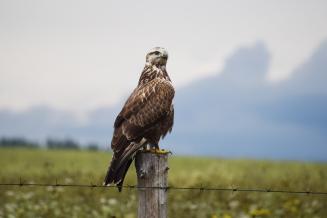
Pakistan: Chitral Bashkar Garmchashma Biosphere Reserve
This biosphere reserve is situated in Chitral District of Khyber Pakhtunkhwa Province, which borders Afghanistan to the north and west. The Chitral area has spectacular landscapes with 543 glaciers and 31 mountain ranges reaching altitudes of 7,000 m and more above sea level, including three peaks in Tirich Mir. The site sustains the populations of a wide range of near-threatened or vulnerable species, including the Kashmir Markhor (Capra falconeri cashmiriensis) and Siberian Ibex (Capra sibirica), two wild species of goat, the Ladakh Urial (Ovis vignei vignei), a wild species of sheep, and the Snow Leopard (Panthera uncia). The biosphere reserve is home to a population of 210,000, as well as to the unique Chitral culture developed over many millennia across more than a dozen distinct peoples and many languages, including endangered Indo-Aryan languages such as Kalasha and Kalashamum. The natural beauty and cultural diversity of the biosphere reserve make it a popular and growing destination for ecotourism.
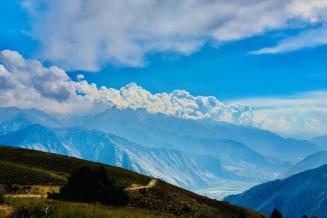
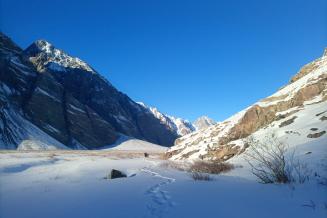
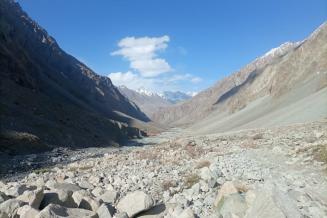
Pakistan: Gallies Biosphere Reserve
Gallies Biosphere Reserve is located in the Khyber Pakhtunkhwa province of Pakistan in the moist-temperate Western Himalayan Ecoregion, which is globally recognized as being of international significance for biodiversity conservation owing to an abundance of endangered or threatened species such as the Common Leopard (Panthera pardus). The site comprises highly diversified ecosystems, including sub-alpine meadows and conifer forests, moist temperate forests and subtropical pine forests. The biosphere reserve is home to a population of 70,000. Thanks to the region's rich cultural heritage and unique natural environment, tourism plays a vital socio-economic role. Local authorities have developed a variety of infrastructure for tourists, including walking treks, chairlifts, horse-riding and camping facilities, as well as tourist information centers which cater to approximately 2.5 million visitors per year.
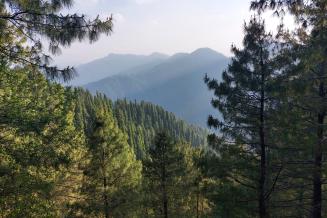
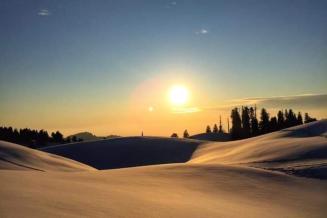
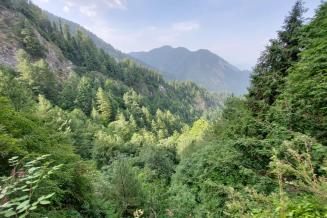
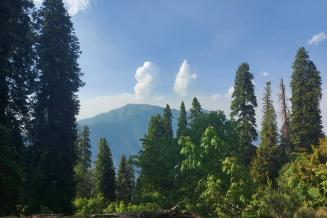
Peru: Bicentenario-Ayacucho Biosphere Reserve
Located in south-central Peru in the Central Andes, the Bicentenario-Ayacucho Biosphere Reserve encompasses diverse mountain ecosystems that rise from between 1,850 m and 4,450 m above sea level. These ecosystems include seasonally dry forests, high Andean wetlands, relict forests and Andean scrubland. The biosphere reserve encompasses the natural protected areas of the Historical Sanctuary of the Pampa de Ayacucho and the Regional Conservation Area of the largest population of the 'titankas' forest (Puya raimondii) in the world. Sometimes referred to as the Queen of the Andes, this elongated, almost giraffe-like flowering plant can grow to up to 15 m in height. The area is also noted for its significant cultural diversity in terms of historical, religious, and social values, including local and indigenous knowledge relating to the management of natural resources. The biosphere reserve has a total population of over 300,000, with the majority living in urban areas, including in the city of Ayacucho located in the transition area. More than half of the population speaks Quecha as their mother tongue. Economic activity includes agriculture, livestock, fish farming, tourism and Andean subsistence herding, as well as service activities.
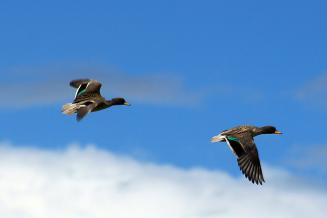
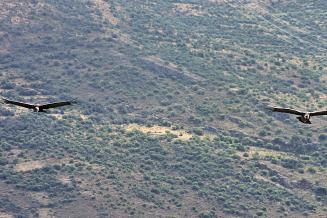
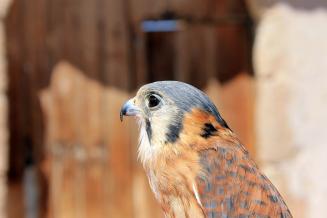




Tanzania: Rufiji-Mafia-Kibiti-Kilwa Biosphere Reserve (RUMAKI)
The RUMAKI Biosphere Reserve is administratively located in the regions of Lindi (Kwila District) and Pwani (Rufiji, Mafia and Kibiti Districts) of Tanzania. The area is predominately a complex coastal-marine ecosystem that includes the first marine protected area in Tanzania, Mafia Island Marine Park (1994). It comprises an outstanding mosaic of tropical marine habitats, including coral reefs, seagrass beds, mangroves and intertidal areas that support populations of turtles, migrating birds, dolphins and whale sharks. The RUMAKI seascape is recognized as being the most biologically productive and diverse marine area in Tanzania and East Africa as a whole. The biosphere reserve contains two cultural World Heritage sites which, along with Mafia Island, are the best-known tourist destinations in the biosphere reserve. Alongside tourism, small-scale and semi-industrial fisheries are among the main livelihoods for the biosphere reserve's population of more than 229,000.
